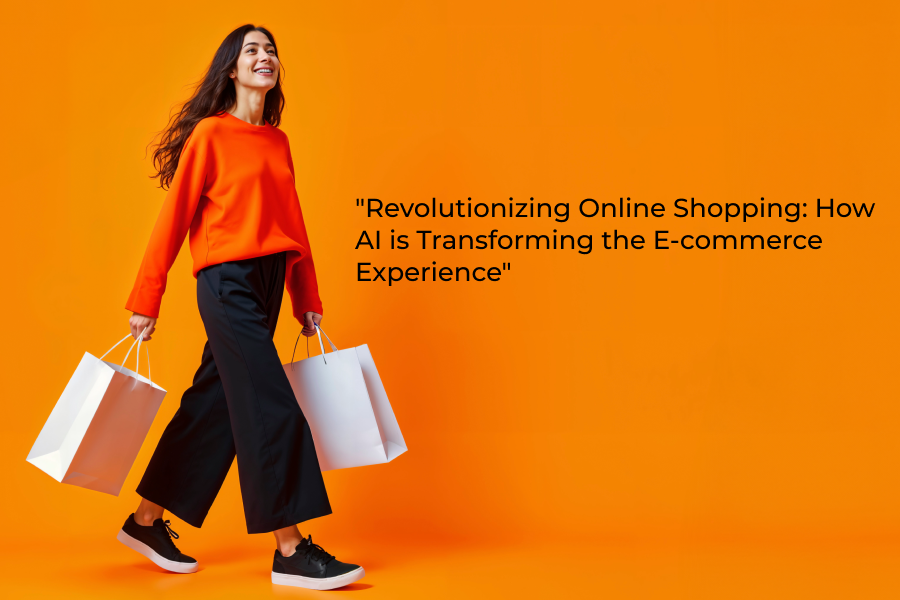The retail industry is on the brink of a major transformation, driven by rapid advancements in generative AI. Retail giants like Amazon, Walmart, and Alibaba are leading the charge, integrating AI into their operations to boost sales, streamline processes, and enhance customer experiences. However, it’s not just the big players benefiting from this technology—small and medium-sized enterprises are also leveraging generative AI to compete on equal footing with industry leaders.
Definition of Generative AI
Generative AI refers to a category of machine learning models designed to create new, original content, rather than simply analyzing or classifying existing data. This type of AI uses techniques such as generative adversarial networks (GANs) and variational autoencoders (VAEs) to produce synthetic data that closely resembles real-world data. These models have the ability to generate anything from text and images to audio and video, marking a significant departure from traditional AI, which focuses on recognizing patterns in existing datasets.
As we look to the future, the potential of generative AI in retail is limitless. It has the power to transform how we shop, consume, and engage with the retail world. The cross-industry adoption of generative artificial intelligence is reshaping how consumers shop. From personalized chatbots improving customer interactions to AI-driven innovation in marketing campaigns, generative AI is disrupting and transforming the retail landscape. This technology is not only revolutionizing consumer experiences but also redefining business practices, marking a significant shift in the future of shopping.
AI styling is an emerging retail use case for generative AI, offering applications in both business-to-business (B2B) and business-to-customer (B2C) contexts. This technology is revolutionizing how retailers curate personalized fashion recommendations and engage with their customers. At its core, AI styling utilizes advanced algorithms to analyze individual preferences and provide tailored fashion suggestions, transforming the shopping experience for consumers and enhancing personalization in the retail industry.
To effectively address ethical considerations surrounding AI use, businesses must proactively engage with them.

Integrating AI styling into business operations can be streamlined with a strategic approach. Here are eight actionable steps to seamlessly incorporate AI styling into your business model:
Step 1 – Define Your Approach: B2C, B2B, or Both
Deciding between a B2C or B2B strategy is crucial. A B2C model allows businesses to engage directly with consumers, offering personalized fashion recommendations that can foster strong brand loyalty. On the other hand, B2B presents opportunities for larger contracts and scalable revenue, catering to specific industry needs.
Step 2 – Amplify Market Presence: Leverage Gen AI’s Competitive Edge
For established brands, AI styling can complement existing offerings. For entrepreneurs, developing AI styling as a standalone product could lead to breakthrough success in the generative AI space.
Step 3 – Decide on Development: In-House AI or Third-Party Solutions
Businesses can choose between developing proprietary AI or using third-party solutions. Proprietary AI can offer a competitive advantage through full ownership and seamless integration, while third-party platforms provide a more accessible, ready-made solution for businesses looking for a quicker deployment.
Step 4 – Balance Inputs: Stylist Expertise, Customer Data, or Both
When developing an AI styling system, businesses can choose to incorporate stylist expertise, customer input, or both. Combining these elements allows for a more sophisticated system that leverages past purchase history, trends, and professional fashion insights. This approach ensures comprehensive personalization, improving the accuracy and relevance of AI-generated recommendations.
Step 5 – Measure Success: Set Key Performance Indicators (KPIs)
Once AI styling is implemented, tracking performance is essential. Key metrics such as conversion rates, customer retention, and subscription growth can gauge customer engagement. On the technical side, businesses should monitor recommendation accuracy, customer satisfaction scores, and the time saved compared to manual styling methods to assess the overall effectiveness of the system.
Step 6 – Maintain Quality: Implement Rigorous Quality Assurance
To ensure the continued success of AI styling, businesses must implement strict quality assurance processes. This includes refining recommendation algorithms, improving image recognition, and enhancing the user experience. Regular updates and continuous performance evaluations will ensure the AI system consistently delivers high-quality results.
Step 7 – Address Ethics: Prioritize Transparency and Accountability
Ethical considerations must be a priority when integrating AI. Establishing clear policies to address issues like bias and transparency is critical. Businesses should communicate openly with customers about how AI is used and ensure their systems are fair and unbiased. Proactive measures in this area will foster trust and credibility with consumers.
Step 8 – Prioritize Data Privacy and Security
As AI styling relies heavily on personal data, ensure that robust data privacy and security protocols are in place. Compliance with regulations like GDPR or CCPA is crucial for maintaining customer trust. Establish clear guidelines for data collection, storage, and usage, and communicate transparently with customers about how their information is handled. Regular audits and security updates can help safeguard sensitive customer data from potential breaches.
By following these eight steps, businesses can effectively integrate AI styling into their operations, unlocking the potential of artificial intelligence to transform retail. AI is poised to reshape the future of shopping, and entrepreneurs who embrace this technology will be well-positioned to drive innovation and stay ahead in the industry.

 Web and Full Stack
Web and Full Stack CMS and Frameworks
CMS and Frameworks Online Marketing
Online Marketing Cloud Services
Cloud Services ECommerce
ECommerce Mobile
Mobile



